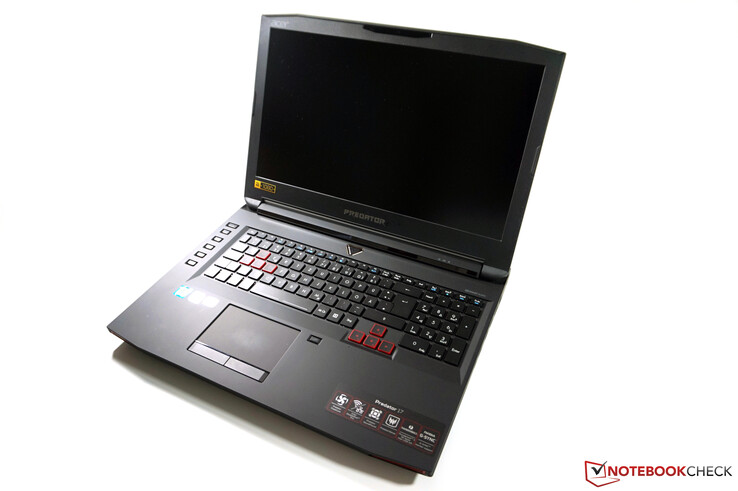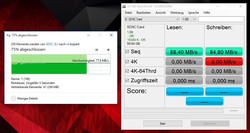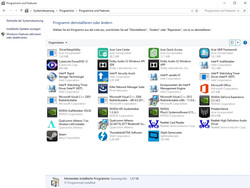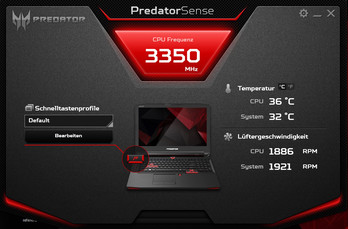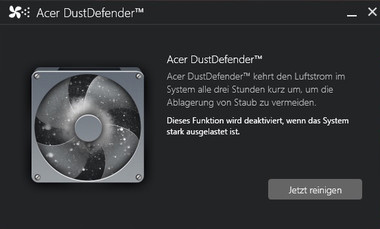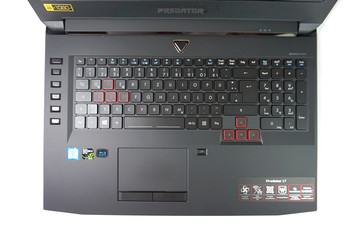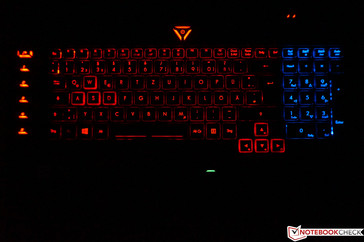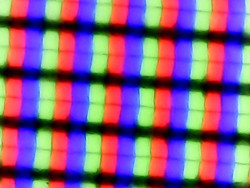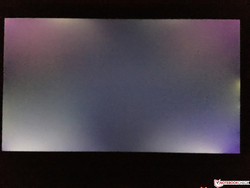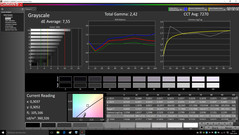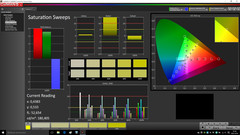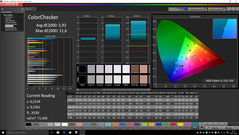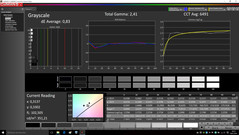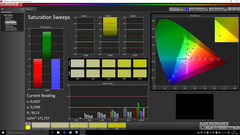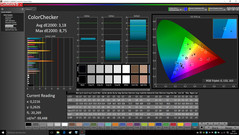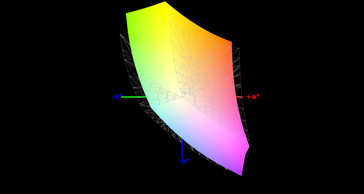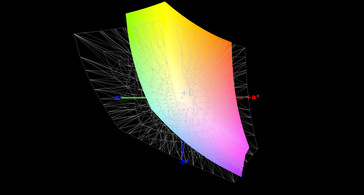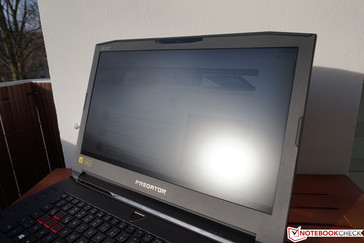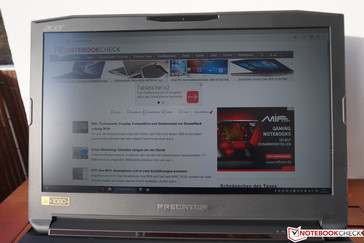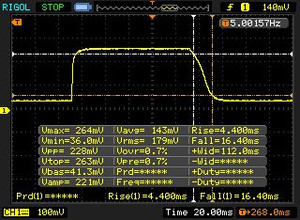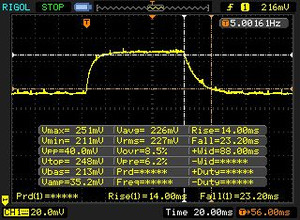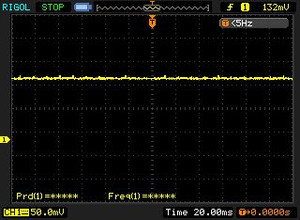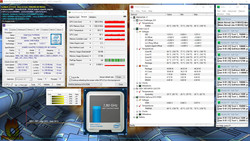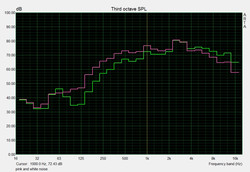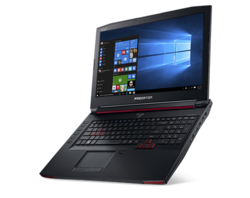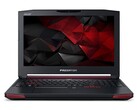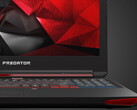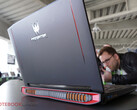Acer Predator 17 G9-791 Notebook Review

For the original German review, see here.
Acer wants to attract gaming enthusiasts among notebook users with the new Predator-series. We already reviewed the smaller Predator 15 at the end of 2015; now we have a look at the bigger sibling Predator 17. Except for the dimensions, the two models share the same design. This means our review unit also has the same unusual construction, which should definitely attract some attention. You once again get a Blu-ray burner, which can be replaced by an additional fan (FrostCore).
Our test model has the designation G9-791-75PV and is one of the less-expensive configurations. Currently, for around 1,900 Euros (~$2134) you get good components with a quad-core processor from Intel, an Nvidia GeForce GTX 970M, 16 GB DDR4-RAM, a matte FHD IPS panel as well as an SSD/HDD combination for performance and storage. Acer also offers many other configurations, which differ in terms of display (FHD or 4K) and the graphics card (GTX 970M or GTX 980M), but mainly in terms of memory equipment (SSD: 128-512 GB, HDD: 1-2 TB, 16-32 GB DDR4-RAM).
The biggest rivals for the Predator 17 are other 17-inch gaming notebooks from the manufacturers MSI (GE72), Schenker (XMG P706) or Alienware (17 R2). They offer different models as well, including the 2016 edition of the GeForce GTX 965M (MSI GE72) or the high-end model GeForce GTX 980 (Schenker XMG U716). The performance of the Predator 17 is also available in smaller 15-inch laptops like the MSI GS60.
Case
The Acer Predator 17 is very bulky and heavy, even for a 17-inch gaming notebook. It tips the scale at 4.1 kg and is much heavier than the direct rivals, only the Schenker XMG U716 with a desktop processor and GeForce GTX 980 is 140 grams heavier. Because of the complex cooling solution, the chassis is also around 3 cm deeper than the other devices.
The case design is very aggressive and Acer uses many red elements, including the fan exhausts, the speaker grilles and the keyboard, for example. There are also red illumination elements on the lid, and the keyboard has a multi-colored background illumination as well. Similar to the smaller Predator 15, the inconsistent illumination is a bit annoying. The numeric keypad is blue by default, the rest of the keyboard red, and the button for the deactivation of the touchpad is bright green, which – contrary to the keyboard – cannot be changed.
We can describe the build quality more objectively, and the notebook leaves a good impression in this respect. The base is very sturdy and you can only slightly warp the central area of the keyboard. The lid on the other hand is pretty easy to bend and you can also hear creaking. The hinges are pretty taut and have no problem even with the heavy lid. Acer does not use any metal, but rubberized plastic surfaces, which leave a very good tactile impression. They are, however, also pretty susceptible to dirt and tricky to clean.
Connectivity
Ports
The ports of the Predator 17 are distributed along the rear areas of the two sides and are no problem if you want to use an external mouse. Besides 4x USB 3.0 ports and a USB 3.1 port (Type-C) with Thunderbolt 3 support, you get two video outputs (HDMI and DisplayPort). Acer also advertises G-Sync support, but only at an external monitor. Some of the rivals offer more in respect of the audio ports (2x 3.5 mm stereo jack). Even though the layout is okay in general, the USB ports at the left side in particular are too close to each other and wider connectors or USB sticks can block each other.
The card reader seems to be identical to the module of the Predator 15, because the determined values are basically identical. We can only measure 85-88 MB/s for sequential reads and writes with our reference card from Toshiba (Exceria Pro SDXC 64 GB UHS-II, up to 260 MB/s). Pictures (~10 MB each) are transferred at around 78 MB/s.
Communication
Acer uses products from Qualcomm Atheros. Wired networks are handled by the e2400 PCI-E Gigabit Ethernet Controller; wireless connectivity is provided by the module Wireless-n/a/ac 1535, which is used in many gaming notebooks. Thanks to the software Killer Network Manager, you can change several settings for the networks and look at several user statistics.
The performance of the Wi-Fi module was very good during our review. We were able to measure almost 600 Mbps in an ac-network and almost 100 Mbps in an n-network under ideal conditions (~1 meter away from our router Asus RT AC56U).
Accessories
Besides the usual accessories like a power adapter (180 Watts), manual and warranty information, the box of the Predator 17 also includes the additional fan FrostCore. The latter can be used to replace the Blu-ray burner and is supposed to reduce the temperatures.
Maintenance
The maintainability of the review unit is pretty limited compared to other gaming notebooks. You get a maintenance hatch at the bottom, but it only grants access to the 2.5-inch hard drive, the M.2 SSD as well as the two empty memory slots. You will have to disassemble the device even further to reach the fans and the other components.
Warranty
The warranty period of the Predator 17 is two years (Pick-Up & Return). Acer also includes a one-year international warranty (International Travelers Warranty).
Software
The Acer Predator 17 is shipped with the 64-bit version of Windows 10 Home. Some tools are preloaded; the most important is PredatorSense, a kind of control center. It includes several options for the macro keys or the keyboard illumination. Other tools handle the speakers (Dolby Audio) and the fans (Acer Dust Defender). The latter reverses the air flow for a short while every three hours to avoid dust accumulation and compensate for the bad accessibility of the fans. You also get the Acer Care Center, which shows information about the product, updates as well as the recovery and allows access to the support. Acer only includes a 30-day trial of Office but does not install other bloatware.
Input Devices
Keyboard
The input devices of the Predator 17 do not differ from the Predator 15. Acer also equips the bigger model with a chiclet keyboard and a dedicated numeric keypad. Similar to the WASD keys, the arrow keys are marked in red. Compared to the 15-inch sibling, there is more space at the sides, so the macro keys (ProZone) are now located at the left side. The five additional keys can be assigned three times and switched with the P-key. The individual modes are represented by different colors. The illumination of the keyboard is multi-colored and can be configured in multiple zones, but there is just one brightness setting.
The keys are 15 x 15 mm with a spacing of 3 mm, only the function keys are a bit smaller. The typing experience is very decent and is supported by the firm keyboard mat. There are no clattery keys, only the bigger keys like Return or the space bar are a bit louder. Stroke and key travel on the other hand do not cause any criticism, and you can also type longer texts on the keyboard.
Touchpad
The touchpad measures 10.5 x 6.5 cm and sits slightly depressed in the palm rest. Acer uses a classic touchpad with two dedicated mouse buttons. The surface is conveniently smooth and offers good gliding capabilities. Our inputs were always executed reliably, even in the peripheral areas. Gestures are supported with up to four fingers, but there is unfortunately no special driver to adjust the gestures or other settings, so you will have to live with the standard Windows settings. The two mouse buttons sit slightly higher and are therefore not perfect for the handling, because you always have to raise your finger a bit. They have a soft stroke, accept inputs over the whole width and are very quiet. Right next to the touchpad is a button to deactivate the mouse replacement, which is very handy. The status is indicated by an LED (green or red).
Display
Acer either equips the Predator 17 with a Full HD or 4K panel. Both versions of the 17.3-inch display are based on the IPS technology and use a matte finish, which are pretty good prerequisites. Our review unit uses the Full HD version with 1920x1080 pixels, and it is still a good choice for a gaming notebook. Many devices are not powerful enough for gaming in 4K anyway, and there are no scaling issues that can be a problem with gaming platforms like Origin and Steam in particular.
We can measure a maximum luminance of 337 cd/m² at the center of the panel (LP173WF4-SPF1), but the average value is just 300 cd/m² because of the suboptimal brightness distribution of just 85%. It is still a good result and subjectively we cannot see brightness differences. More annoying is the backlight bleeding, which is visible at almost all the sides. The problem is a bit exaggerated on the picture (right), but you can clearly see the bleeding at the edges. The black value is comparatively low for an IPS display at 0.26 cd/m² and results in an excellent contrast ratio of 1300:1. Our review unit also surpasses the rivals, even though the quality level among the competition is pretty high in general.
| |||||||||||||||||||||||||
Brightness Distribution: 85 %
Center on Battery: 337 cd/m²
Contrast: 1296:1 (Black: 0.26 cd/m²)
ΔE ColorChecker Calman: 5.92 | ∀{0.5-29.43 Ø4.77}
ΔE Greyscale Calman: 7.55 | ∀{0.09-98 Ø5}
85% sRGB (Argyll 1.6.3 3D)
56% AdobeRGB 1998 (Argyll 1.6.3 3D)
62% AdobeRGB 1998 (Argyll 3D)
84.7% sRGB (Argyll 3D)
66.7% Display P3 (Argyll 3D)
Gamma: 2.42
CCT: 7270 K
| Acer Predator 17 G9-791-75PV LP173WF4-SPF1 (LGD0469) | MSI GE72-6QF8H11 LG Phillips LP173WF4-SPF1 | Schenker XMG P706 LG LP173WF4-SPD1 | Alienware 17 R2 LG Philips LGD0459 / 173WF4 (Dell P/N: CV69H) | Schenker XMG U716 AU B173ZAN01.0 (AUO109B) | |
|---|---|---|---|---|---|
| Display | 1% | 0% | -0% | 36% | |
| Display P3 Coverage (%) | 66.7 | 67.2 1% | 66.9 0% | 66.6 0% | 86.5 30% |
| sRGB Coverage (%) | 84.7 | 85.5 1% | 84.6 0% | 84.3 0% | 100 18% |
| AdobeRGB 1998 Coverage (%) | 62 | 62.5 1% | 61.8 0% | 61.6 -1% | 99 60% |
| Response Times | -31% | ||||
| Response Time Grey 50% / Grey 80% * (ms) | 37 ? | 45 ? -22% | |||
| Response Time Black / White * (ms) | 20 ? | 28 ? -40% | |||
| PWM Frequency (Hz) | |||||
| Screen | 6% | -1% | 4% | 9% | |
| Brightness middle (cd/m²) | 337 | 315 -7% | 306 -9% | 331 -2% | 374 11% |
| Brightness (cd/m²) | 303 | 297 -2% | 302 0% | 307 1% | 356 17% |
| Brightness Distribution (%) | 85 | 88 4% | 90 6% | 84 -1% | 88 4% |
| Black Level * (cd/m²) | 0.26 | 0.3 -15% | 0.34 -31% | 0.3 -15% | 0.4 -54% |
| Contrast (:1) | 1296 | 1050 -19% | 900 -31% | 1103 -15% | 935 -28% |
| Colorchecker dE 2000 * | 5.92 | 4.34 27% | 5.49 7% | 4.88 18% | 4.23 29% |
| Greyscale dE 2000 * | 7.55 | 2.87 62% | 3.97 47% | 3.63 52% | 5.48 27% |
| Gamma | 2.42 91% | 2.46 89% | 2.15 102% | 2.17 101% | 2.35 94% |
| CCT | 7270 89% | 6969 93% | 6163 105% | 6325 103% | 6686 97% |
| Color Space (Percent of AdobeRGB 1998) (%) | 56 | 56 0% | 55.5 -1% | 55 -2% | 88 57% |
| Color Space (Percent of sRGB) (%) | 85 | 85 0% | 84.5 -1% | 84.2 -1% | 100 18% |
| Colorchecker dE 2000 max. * | 6.7 | ||||
| Total Average (Program / Settings) | 4% /
4% | -1% /
-1% | 2% /
3% | 5% /
9% |
* ... smaller is better
We check the color accuracy of the panel with an X-Rite i1 Pro 2 spectrophotometer as well as the professional software CalMAN. The Predator 17 is not very good ex-works, because the deviations of the colors and the grayscale compared to the reference color space sRGB are 5.92 and 7.55 (target smaller than 3 for each) and we can also see a slight blue cast. The grayscale in particular benefits from a calibration, since the DeltaE value drops to just 0.83. The color presentation is also improved to 3.18 on average, but there are still some outliers (yellow, orange) at up to 8.75.
The color-space coverage of the panel is 85% sRGB and 56% AdobeRGB. The display is therefore not suited for professional picture editing, but this is not really important for gaming.
The outdoor capabilities are very good thanks to the matte panel surface and the high luminance, which is not reduced on battery power. The device is still not really mobile thanks to its dimensions and the weight, but a small gaming session in the garden is no problem when the weather is good.
Display Response Times
| ↔ Response Time Black to White | ||
|---|---|---|
| 20 ms ... rise ↗ and fall ↘ combined | ↗ 4 ms rise | |
| ↘ 16 ms fall | ||
| The screen shows good response rates in our tests, but may be too slow for competitive gamers. In comparison, all tested devices range from 0.1 (minimum) to 240 (maximum) ms. » 42 % of all devices are better. This means that the measured response time is similar to the average of all tested devices (20.2 ms). | ||
| ↔ Response Time 50% Grey to 80% Grey | ||
| 37 ms ... rise ↗ and fall ↘ combined | ↗ 14 ms rise | |
| ↘ 23 ms fall | ||
| The screen shows slow response rates in our tests and will be unsatisfactory for gamers. In comparison, all tested devices range from 0.165 (minimum) to 636 (maximum) ms. » 52 % of all devices are better. This means that the measured response time is worse than the average of all tested devices (31.6 ms). | ||
Screen Flickering / PWM (Pulse-Width Modulation)
| Screen flickering / PWM not detected | |||
In comparison: 53 % of all tested devices do not use PWM to dim the display. If PWM was detected, an average of 8081 (minimum: 5 - maximum: 343500) Hz was measured. | |||
Performance
Acer offers very balanced configurations of the Predator 17. We are particularly happy about the fact that every model is equipped with an SSD/HDD combination. This ensures a responsive system in practice and you still get sufficient storage for gaming collections. You can also select the graphics card as well as the size of the memory equipment, so you can choose a model based on your preferences. The Blu-ray burner can be replaced by an additional fan, which is supposed to reduce the temperatures according to Acer. The FrostCore is included by default, so we performed all the performance test and emission measurements of the Predator 17 with the additional fan.
Processor
The Acer Predator 17 is exclusively available with the Core i7-6700HQ processor from Intel. It is based on the current Skylake architecture and has four cores that can execute up to eight threads thanks to Hyper-Threading. The maximum power consumption (TDP) of the CPU is 45 Watts, and it runs with frequencies between 2.6-3.5 GHz. It is a very powerful and popular processor, which is currently used for many gaming and multimedia notebooks. We think it is a good choice, because the performance in games is usually limited by the graphics card and a more expensive CPU would not be a big improvement.
The single-core performance of the processor is on the expected level, but it is usually worse than the other devices with the identical CPU in the multi-core benchmarks. The chip cannot maintain its maximum Turbo of 3.1 GHz in this case, but only at the start of the tests. After that it will often drop to 2.8 GHz. The differences are not big at a couple of percent though, and there are no limitations when you play games. More information and comparisons with the Intel Core i7-6700HQ are available here.
System Performance
The subjective performance impression is mainly affected by the SSD in practice, and Acer fortunately equips every configuration of the Predator 17 with one. The results in the synthetic PCMarks are therefore on the expected level. Only devices with even faster NVMe- and PCIe-SSDs or a desktop processor perform even better. However, we were subjectively not completely satisfied, because there were often slight delays when we handled files on the SSD. One example was the moving of files, which stayed at the same place for a short while before they were moved. We usually only know this behavior from conventional hard drives, but not SSDs.
| PCMark 7 Score | 5991 points | |
| PCMark 8 Home Score Accelerated v2 | 3880 points | |
| PCMark 8 Creative Score Accelerated v2 | 4810 points | |
Help | ||
| PCMark 7 - Score (sort by value) | |
| Acer Predator 17 G9-791-75PV | |
| MSI GE72-6QF8H11 | |
| Schenker XMG P706 | |
| Alienware 17 R2 | |
| Schenker XMG U716 | |
| PCMark 8 | |
| Home Score Accelerated v2 (sort by value) | |
| Acer Predator 17 G9-791-75PV | |
| MSI GE72-6QF8H11 | |
| Schenker XMG P706 | |
| Alienware 17 R2 | |
| Schenker XMG U716 | |
| Creative Score Accelerated v2 (sort by value) | |
| Acer Predator 17 G9-791-75PV | |
| MSI GE72-6QF8H11 | |
| Schenker XMG P706 | |
| Schenker XMG U716 | |
Storage Devices
Acer equips all models of the Predator 17 with a combination of SSD and HDD, only the storage capacities differ depending on the configuration. Our review model uses a 256 GB M.2-SSD, which is attached via SATA III, so the maximum transfer rates are limited to around 500-550 MB/s. The drive from Lite-On manages benchmark results of around 480 and 350 MB/s (seq. read/write) and the other results are inconspicuous as well.
To satisfy the constantly growing storage requirements of modern games, the manufacturer also includes a 1 TB hard drive from Western Digital. The average transfer rate is 86 MB/s according to HD Tune, which is a normal result for a 5400 rpm drive.
More hard drive comparisons are available in our comprehensive HDD/SSD section.
GPU Performance
The Nvidia GeForce GTX 970M is a high-end GPU from the current Maxwell generation. The GM 204 chip runs with a core clock of up to 1038 MHz (GPU-Boost), and the 3 GB GDDR5-VRAM (192-bit interface) is effectively clocked at 5,000 MHz. However, it is only the "smaller" version of the GTX 970M, because there is also a model with 6 GB RAM. Simple tasks like office, web and video applications can be handled by the integrated Intel HD Graphics 530. Thanks to the Optimus technology, the system will automatically select the right GPU, which worked reliably during our review.
The GTX 970M of our Predator 17 is slightly ahead of the identically equipped MSI GE72 in the 3DMark graphics tests. The differences are, however, very small and could also be a result of the newer driver version. The new GTX 965M (Ti) is around 20% slower in the current 3DMark Fire Strike test, while the GTX 980M is between 25-30% faster. The GeForce 980 (notebook) is clearly out of range with an advantage of almost 70%.
All in all, there are no surprises here. A 3DMark 11 run on battery power determines a 30% lower score compared to mains (9529 vs. 6718 points). More information and benchmarks for the GeForce GTX 970M are available in our Tech section.
| 3DMark 06 1024x768 Score | 25463 points | |
| 3DMark 11 Performance | 9529 points | |
| 3DMark Ice Storm Standard Score | 87812 points | |
| 3DMark Cloud Gate Standard Score | 21651 points | |
| 3DMark Fire Strike Score | 6708 points | |
Help | ||
| 3DMark | |
| 1920x1080 Fire Strike Score (sort by value) | |
| Acer Predator 17 G9-791-75PV | |
| MSI GE72 965M Ti | |
| MSI GE72-6QF8H11 | |
| Schenker XMG P706 | |
| Alienware 17 R2 | |
| Schenker XMG U716 | |
| 1920x1080 Fire Strike Graphics (sort by value) | |
| Acer Predator 17 G9-791-75PV | |
| MSI GE72 965M Ti | |
| MSI GE72-6QF8H11 | |
| Schenker XMG P706 | |
| Alienware 17 R2 | |
| Schenker XMG U716 | |
Gaming Performance
Our green gaming table already shows the GTX 970M can handle smooth FHD gameplay in every modern title. Only very demanding titles like GTA V, for example, can drop below the 30 fps mark at maximum details, so you should use the High preset in these cases. The Predator 17 can slightly beat the identically equipped MSI GE72 in our gaming benchmarks, which can once again be a result of the newer driver. The updated GTX 965M falls behind by 25-30% depending on game and settings, while the GTX 980M is more than 20% faster.
We sometimes had problems with freezes when we changed graphics settings (GTA V and Just Cause 3) and had to restart the notebook. Unfortunately, we could not determine the cause for this problem. More information about the performance of different GPUs is available in our gaming list.
| Dirt Rally | |
| 1920x1080 High Preset (sort by value) | |
| Acer Predator 17 G9-791-75PV | |
| Schenker XMG P706 | |
| Schenker XMG U716 | |
| 1920x1080 Ultra Preset AA:4x MS (sort by value) | |
| Acer Predator 17 G9-791-75PV | |
| Schenker XMG P706 | |
| Schenker XMG U716 | |
| Star Wars Battlefront | |
| 1920x1080 High Preset AA:FX (sort by value) | |
| Acer Predator 17 G9-791-75PV | |
| MSI GE72 965M Ti | |
| Schenker XMG U716 | |
| 1920x1080 Ultra Preset AA:FX (sort by value) | |
| Acer Predator 17 G9-791-75PV | |
| MSI GE72 965M Ti | |
| Schenker XMG U716 | |
| GTA V | |
| 1920x1080 High/On (Advanced Graphics Off) AA:2xMSAA + FX AF:8x (sort by value) | |
| Acer Predator 17 G9-791-75PV | |
| Schenker XMG U716 | |
| 1920x1080 Highest AA:4xMSAA + FX AF:16x (sort by value) | |
| Acer Predator 17 G9-791-75PV | |
| Schenker XMG U716 | |
| Rainbow Six Siege | |
| 1920x1080 High Preset AA:T AF:4x (sort by value) | |
| Acer Predator 17 G9-791-75PV | |
| MSI GE72 965M Ti | |
| 1920x1080 Ultra Preset AA:T AF:16x (sort by value) | |
| Acer Predator 17 G9-791-75PV | |
| MSI GE72 965M Ti | |
| Just Cause 3 | |
| 1920x1080 High / On AA:FX AF:8x (sort by value) | |
| Acer Predator 17 G9-791-75PV | |
| MSI GE72 965M Ti | |
| 1920x1080 Very High / On AA:SM AF:16x (sort by value) | |
| Acer Predator 17 G9-791-75PV | |
| MSI GE72 965M Ti | |
| low | med. | high | ultra | |
|---|---|---|---|---|
| GTA V (2015) | 125.6 | 76 | 30.5 | |
| Dirt Rally (2015) | 120.1 | 95.2 | 60.9 | |
| Star Wars Battlefront (2015) | 145.8 | 72.3 | 61.5 | |
| Rainbow Six Siege (2015) | 170.1 | 89.5 | 64.3 | |
| Just Cause 3 (2015) | 102.6 | 61.3 | 52.4 |
Emissions
System Noise
The fans of the Predator 17 are never deactivated, but they are still conveniently quiet while idling at 32-33 dB(A). The cooling solution is much more active with the activated High-Performance power plan at up to 37 dB(A), and you can also hear the hard drive at 34 dB(A) when you access files. The fans get really loud under load – despite the FrostCore – and also louder compared to the rivals. We can already determine 44 dB(A) in the first scene of 3DMark06, although the noise can vary between 40 and 45 dB(A). The comparison devices perform better in this scenario in particular, only the much more powerful Schenker XMG U716 is on the same level. We can measure up to 49 dB(A) in the worst case scenario; all in all, we would have expected a quieter operation with the large cooling solution.
The fans can sometimes start to spin up for a short while under light workloads. This is the previously mentioned Dust Defender feature, which is supposed to reduce dust accumulations at the fans.
Noise level
| Idle |
| 32 / 33 / 37 dB(A) |
| HDD |
| 34 dB(A) |
| Load |
| 44 / 49 dB(A) |
 | ||
30 dB silent 40 dB(A) audible 50 dB(A) loud |
||
min: | ||
| Acer Predator 17 G9-791-75PV GeForce GTX 970M, 6700HQ | MSI GE72-6QF8H11 GeForce GTX 970M, 6700HQ | Schenker XMG P706 GeForce GTX 980M, 6820HK | Alienware 17 R2 GeForce GTX 980M, 4980HQ | Schenker XMG U716 GeForce GTX 980 (Laptop), 6700 | |
|---|---|---|---|---|---|
| Noise | 8% | 7% | 3% | -2% | |
| Idle Minimum * (dB) | 32 | 30 6% | 30.9 3% | 29.4 8% | 33 -3% |
| Idle Average * (dB) | 33 | 30.2 8% | 31.2 5% | 30.8 7% | 35 -6% |
| Idle Maximum * (dB) | 37 | 33 11% | 31.2 16% | 35 5% | 38 -3% |
| Load Average * (dB) | 44 | 40.4 8% | 40.5 8% | 43.4 1% | 45 -2% |
| Load Maximum * (dB) | 49 | 46.2 6% | 47 4% | 51.6 -5% | 48 2% |
* ... smaller is better
Temperature
We were obviously eager to see the impact of the additional fan FrostCore, even though it could not really convince us in the review of the Predator 15. It is located in the front left section of the base unit and does not have direct contact with the heat pipes of the components. This means only the surface temperatures of the palm rest will be reduced, which is also clearly visible in our temperature graphics. This area is also very cool under load. We checked the temperature of the components under load, but the values did not differ with or without the FrostCore.
The overall temperature development still leaves a better impression compared to the 15-inch model. The device basically does not warm up at all while idling, and the higher temperatures are primarily focused on the center and the rear area of the base. The notebook also stays noticeably cooler than the other comparison devices. You could use the Predator 17 on your lap in theory, although this is rather improbable due to the size and the weight.
Neither the processor nor the graphics card can utilize their full performance in the stress test (Prime95 and FurMark for at least one hour), even though the temperatures are not critical at 84 °C for the CPU and 69 °C for the GPU. The processor is probably limited by the TDP and runs at 2.8 GHz, while the GPU cannot quite maintain its nominal clock of 924 MHz at just 885 MHz. A 3DMark run immediately after the stress test did not determine a performance reduction.
(±) The maximum temperature on the upper side is 41.7 °C / 107 F, compared to the average of 40.4 °C / 105 F, ranging from 21.2 to 68.8 °C for the class Gaming.
(±) The bottom heats up to a maximum of 41.6 °C / 107 F, compared to the average of 43.3 °C / 110 F
(+) In idle usage, the average temperature for the upper side is 26.1 °C / 79 F, compared to the device average of 33.9 °C / 93 F.
(+) The palmrests and touchpad are cooler than skin temperature with a maximum of 30.2 °C / 86.4 F and are therefore cool to the touch.
(±) The average temperature of the palmrest area of similar devices was 28.8 °C / 83.8 F (-1.4 °C / -2.6 F).
| Acer Predator 17 G9-791-75PV GeForce GTX 970M, 6700HQ | MSI GE72-6QF8H11 GeForce GTX 970M, 6700HQ | Schenker XMG P706 GeForce GTX 980M, 6820HK | Alienware 17 R2 GeForce GTX 980M, 4980HQ | Schenker XMG U716 GeForce GTX 980 (Laptop), 6700 | |
|---|---|---|---|---|---|
| Heat | -41% | -11% | -20% | -34% | |
| Maximum Upper Side * (°C) | 41.7 | 50.3 -21% | 44 -6% | 50.8 -22% | 48.8 -17% |
| Maximum Bottom * (°C) | 41.6 | 49.9 -20% | 42.3 -2% | 48.7 -17% | 55.8 -34% |
| Idle Upper Side * (°C) | 27.2 | 40.9 -50% | 31.7 -17% | 30.9 -14% | 36.7 -35% |
| Idle Bottom * (°C) | 25 | 42.8 -71% | 29.9 -20% | 31.7 -27% | 37.3 -49% |
* ... smaller is better
Speakers
The sound system of the Predator 17 consists of four speakers and two subwoofers according to Acer. The maximum volume is 87 dB(A), similar to the Predator 15. This is sufficient even for bigger rooms. The software Dolby Audio provides several presets (Dynamic, Movie, Game, Voice, etc.) and there is an equalizer as well as several options to improve the sound. The presets also sound different, but none of them could really convince us. The sound is not very balanced and quickly tends to distort at higher volumes. We were also disappointed by the subwoofers, which are hardly noticeable at all. The playback at the stereo jack was free of noise and is suitable for high-impedance headphones; you should reduce the volume to 10 or lower before you use normal headphones.
Energy Management
Power Consumption
Acer does a very good job with the power consumption of the Predator 17 and is surprisingly frugal, particularly in the idle measurements. 11-22 Watts is very low for a gaming notebook with a 17-inch display. We can notice the fast components under load, where the consumption rises to 164 Watts. The 180-Watt PSU should not have a problem with this consumption in theory, but the battery was still drained a bit during the stress test.
| Off / Standby | |
| Idle | |
| Load |
|
Key:
min: | |
| Acer Predator 17 G9-791-75PV GeForce GTX 970M, 6700HQ | MSI GE72-6QF8H11 GeForce GTX 970M, 6700HQ | Schenker XMG P706 GeForce GTX 980M, 6820HK | Alienware 17 R2 GeForce GTX 980M, 4980HQ | Schenker XMG U716 GeForce GTX 980 (Laptop), 6700 | |
|---|---|---|---|---|---|
| Power Consumption | -24% | -7% | -5% | -126% | |
| Idle Minimum * (Watt) | 11 | 16.7 -52% | 12 -9% | 8.9 19% | 35 -218% |
| Idle Average * (Watt) | 17 | 23 -35% | 17.9 -5% | 16 6% | 44 -159% |
| Idle Maximum * (Watt) | 22 | 31.7 -44% | 19.3 12% | 26.6 -21% | 51 -132% |
| Load Average * (Watt) | 96 | 97.4 -1% | 97.7 -2% | 124 -29% | 134 -40% |
| Load Maximum * (Watt) | 164 | 141.4 14% | 213 -30% | 165.8 -1% | 298 -82% |
* ... smaller is better
Battery Runtime
The Acer Predator 17 manages long battery runtimes with its large 8-cell battery (lithium-ion, 6,000 mAh). The minimum runtime under load (Battery Eater Classic Test, maximum brightness) is almost two hours, while you can expect almost 12 hours under perfect conditions (Battery Eater's Reader's Test, minimum brightness, wireless off). But our results in the more realistic test at 150 cd/m² are pretty good as well. Web browsing is possible for around 6 hours and you should manage several movies with a video runtime of 7.5 hours (Big Buck Bunny, H.264, 1080p). The rivals have to be recharged much sooner in some scenarios – well done Acer.
| Acer Predator 17 G9-791-75PV GeForce GTX 970M, 6700HQ | MSI GE72-6QF8H11 GeForce GTX 970M, 6700HQ | Schenker XMG P706 GeForce GTX 980M, 6820HK | Alienware 17 R2 GeForce GTX 980M, 4980HQ | Schenker XMG U716 GeForce GTX 980 (Laptop), 6700 | |
|---|---|---|---|---|---|
| Battery runtime | -57% | -39% | -1% | -48% | |
| Reader / Idle (h) | 11.7 | 6.7 -43% | 5 -57% | 12.2 4% | 2.6 -78% |
| H.264 (h) | 7.6 | 2.3 -70% | 3.7 -51% | ||
| WiFi v1.3 (h) | 6 | 2.6 -57% | 3.7 -38% | ||
| Load (h) | 1.8 | 0.8 -56% | 1.6 -11% | 1.7 -6% | 1.5 -17% |
| WiFi (h) | 5.8 |
Pros
Cons
Verdict
The two new gaming notebooks from Acer, the Predator 15 and our test model Predator 17, are very similar in many regards, so our verdict is comparable as well. Besides the design, you will notice the size and the weight of the 17-inch device in particular. The rivals offer the same kind of performance with lighter and more compact cases. This is partly caused by the cooling, but it could not convince us completely. It does keep the components cool but can be pretty loud. It is one of the loudest notebooks among our comparison devices in medium load scenarios. The additional fan FrostCore sounds nice on paper but does not help the components at all in practice. It cools down the left side of the palm rest instead.
Other drawbacks are the limited Turbo utilization as well as the GPU throttling under maximum load, the mediocre speakers and the backlight bleeding. The maintainability is limited as well. If Acer can fix these issues for the next iteration, we should get a very good device, because even the first attempt is great in some categories. This includes the sturdy chassis, the bright and high-contrast display, the very good battery runtimes, the modern port equipment and the useful tools.
Acer presents a successful first attempt for a gaming notebook, even though it still requires fine tuning in some areas.
Acer Predator 17 G9-791-75PV
- 02/29/2016 v5 (old)
Andreas Osthoff


